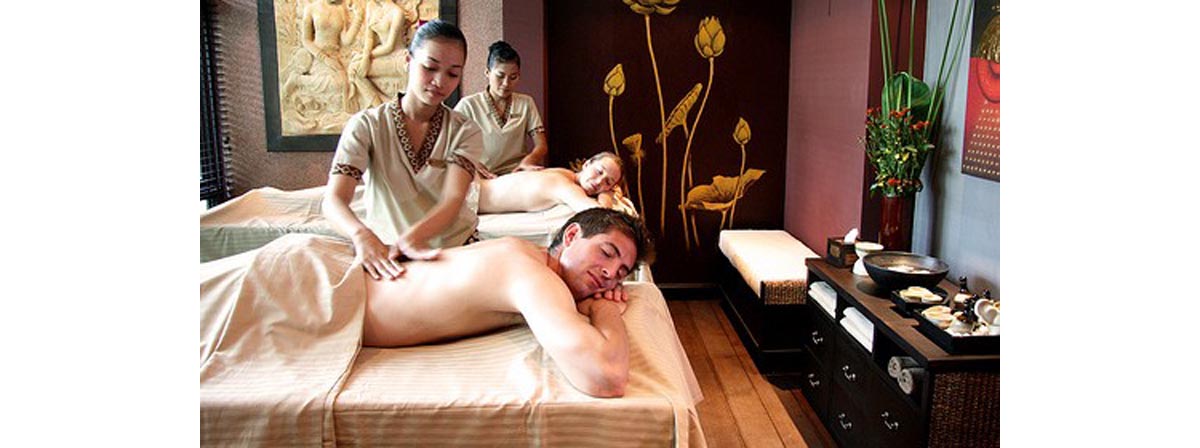Table of Contents
We all know that a good rub down makes most muscle aches and pains go away quickly. Therapeutic massage has been used for thousands of years to help athletes, laborers, and anyone who has money to pay the masseur or masseuse overcome the effects of excessively strenuous exercise and muscle tension.
The benefits of massage stretch far beyond relieving achy muscles, however. Massage also reduces inflammation, stimulates circulation, and the benefits of massage for achy muscles even have a scientific explanation, thanks to five especially brave volunteers for a study conducted at McMaster University in Hamilton, Ontario.

Canadian Scientists Biopsy Muscles to Measure Effects of Massage
Dr. Mark A. Tarnopolsky of McMaster University's medical school recruited five male athletes willing to have their thigh muscles biopsied, not just once but three times, before and after exercise and massage. On the first visit to the lab, the researchers took a tissue sample of each athlete's thigh muscles at rest. On the second visit to the lab, the researchers had the volunteers ride a stationary bike until they were exhausted.
The volunteers then received 10 minutes of therapeutic massage on one leg, but not the other. The doctors took a muscle biopsy of both legs immediately after the massage, and then again to monitor tissue repair after the volunteers had 2-1/2 hours of rest.
Massage Helps Muscles Repair Themselves
Looking at tissue samples under an electron microscope, Dr. Tanopolsky and colleagues found that massaging the muscle increased the activity of mitochondria, the tiny "mini-organs" within the cell that generate energy. Increasing the cell's production of energy allowed it to absorb more glucose, water, and amino acids. The cell then uses the glucose and water to make glycogen. Glycogen is stored energy, but it is also the compound that "pumps up" muscle after it has been exercised. The cell uses the amino acids to make the proteins it needs to repair fibers that are broken down during heavy exercise, which leads to muscle gains that last.
Massage Relieves Pain Without Interfering with Muscle Recovery
But that isn't the only benefit of massage. Tarnopolksy and colleagues also found that massage reduces the production of inflammatory compounds known as cytokines. However, it doesn't stop the production of all the cytokines. Having a massage only stops the production of the cytokines that cause pain. Massage allows a partial process of inflammation to proceed so that old muscle fibers can be broken down and new, stronger muscle fibers can take their place. Aspirin and ibuprofen likewise short-circuit the production of pain-causing cytokines, but they also interfere with the production of stronger muscle — making massage a better choice if you want to hold onto the gains you have worked so hard for.
With the work done McMaster University in Canada, science now knows not only that sports massage works, but also exactly why sports massage works. But it turns out that massage is not the only way to stop the processes that cause pain and inflammation after vigorous exercise. What else do you need to know?
- Andersen LL, Jay K, Andersen CH, Jakobsen MD, Sundstrup E, Topp R, Behm DG. Acute effects of massage or active exercise in relieving muscle soreness: Randomized controlled trial. J Strength Cond Res. 2013 Mar 21. [Epub ahead of print].
- Crane JD, Ogborn DI, Cupido C, Melov S, Hubbard A, Bourgeois JM, Tarnopolsky MA. Massage therapy attenuates inflammatory signaling after exercise-induced muscle damage. Sci Transl Med. 2012 Feb 1. 4(119):119ra13. doi: 10.1126/scitranslmed.3002882.
- Photo courtesy of Tara Angkor Hotel by Flickr : www.flickr.com/photos/taraangkorhotel/5918125059/
- Photo courtesy of Drew Leavy by Flickr : www.flickr.com/photos/drewleavy/2898503752/

